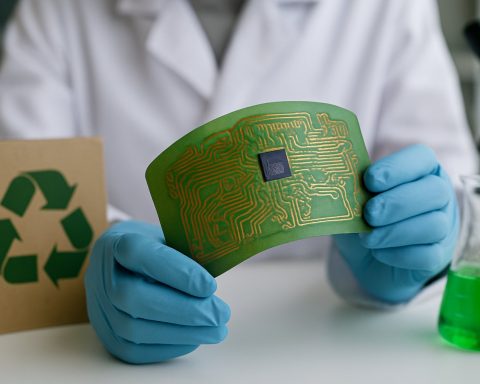- Maharashtra aims for 30% electric vehicle (EV) adoption by 2030, targeting cleaner and quieter urban transportation.
- New EV buyers from April 2025 enjoy toll exemptions, no motor vehicle tax, and waived registration renewal fees on key expressways.
- Attractive incentives offered: up to Rs 2 lakh for commercial EVs and Rs 20 lakh for electric buses.
- Mandatory EV charging infrastructure in all new buildings; commercial spaces must provide chargers in 50% of parking spots.
- Highway charging stations every 25 km to eliminate range anxiety.
- Expected to reduce PM 2.5 and greenhouse emissions significantly within five years.
- Investments in EV R&D, battery safety, and technical education to support sustainable mobility growth.
The dull roar of Mumbai’s highways may soon change pitch—lighter, quieter, and cleaner—as Maharashtra unveils a sweeping policy to electrify the state’s roads and reimagine urban mobility. With a target of 30 percent electric vehicle adoption by 2030, state officials have committed to an era that swaps petrol fumes for the silent hum of batteries and the gleam of charging stations.
Those who buy EVs after April 2025 will discover more than just a futuristic driving experience: their cars will slip past toll booths on the Mumbai-Pune and Mumbai-Nashik expressways without slowing down, shielded from motor vehicle taxes and spared pesky registration renewal fees. The state has sketched out a blueprint of incentives—up to Rs 2 lakh for transport four-wheelers and as much as Rs 20 lakh for electric buses—while embracing commercial and residential infrastructure as the new battleground in the quest for clean air.
Maharashtra is betting big on infrastructure. Imagine every new apartment building with sparkling charging stations in their shadowy basements. In commercial towers, plug-in ports must sprout in half the parking spots, while even older buildings are called to upgrade 20 percent of their spaces. On highways, no EV should go more than 25 kilometers without finding a charge—turning the daunting empty-cell warning into a relic of the past.
This bold transition doesn’t just glimmer with convenience. The numbers point to a deeper ambition: within five years, officials aim to cut 325 tonnes of choking PM 2.5 emissions and more than 1,000 tonnes of greenhouse gases from traffic-laden air. Such figures breathe new hope into communities battling pollution—from the coastal sprawl of Mumbai to the heartlands of Nashik and Nagpur.
Behind the scenes, dedicated grants will fuel R&D: powering advances in cutting-edge battery chemistry, green hydrogen production, and smarter vehicle-to-grid connections. Government fleets will lead by example, with mandates ensuring half of all newly procured city vehicles are electric in key urban hubs. And every EV on the road will be assured of rigorous safety, with a state-spanning network of automated testing facilities set to stress-test batteries before they ever face a monsoon pothole.
Even classrooms are being rewired. The Maharashtra State Board of Technical Education prepares to introduce hands-on courses in EV engineering, battery systems, and energy management—an investment in a generation ready to drive the state’s electric revolution forward.
Maharashtra’s policy doesn’t just sketch the possibility of a cleaner commute—it signals the arrival of a new standard for ambition and urgency in India’s fight against pollution. The message to residents is clear: the road to a greener tomorrow is already being paved. For those ready to switch lanes, the future is waiting—fully charged.
For detailed information about electric vehicles and new technology trends, visit Tesla and for state policy updates, check the Maharashtra Government’s official site.
Takeaway: Maharashtra is not just planning an EV revolution—it’s already breaking ground. Whether you’re a commuter, policymaker, or engineer, the drive toward cleaner, smarter transportation is about to accelerate statewide.
Maharashtra’s Electric Vehicle Revolution: 10 Crucial Insights & Hidden Benefits You Can’t Ignore
Maharashtra’s Bold Leap: More Than Just an EV Policy
Maharashtra’s recently unveiled policy to electrify its roads isn’t just an environmental statement—it’s a massive, multifaceted push with economic, infrastructural, and societal impacts. Beyond the headline targets and incentives, here’s a deeper look at what’s changing, what it means for residents and businesses, and what you can do right now to ride the shockwave toward an electric future.
—
1. Key Features & Advantages Over Other States
– Comprehensive Charging Network: Maharashtra sets a benchmark by mandating charging stations every 25 kilometers along highways (few states offer such coverage), eliminating range anxiety.
– Aggressive Urban Infrastructure Push: New commercial buildings must dedicate 50% of their parking for EV charging, while residential towers must offer charging to all new units—outpacing rules in Delhi and Karnataka.
– Tax & Toll Incentives: Vehicle buyers post-April 2025 enjoy toll waivers and are exempt from motor vehicle taxes and registration renewal fees, a substantial cost saving versus traditional vehicles.
2. How-To: Transitioning to EVs in Maharashtra
Step 1: Research eligible EV models qualifying for government incentives.
Step 2: Visit authorized dealerships; financiers offer lower-rate green loans for EVs.
Step 3: Register your EV and apply for the applicable cash incentive (up to Rs 2 lakh for cars, Rs 20 lakh for buses).
Step 4: Install a certified charging point at your residence or office; verify builder compliance for new developments.
3. Industry Trends & Market Forecasts
– National Outlook: India’s EV market could reach $7.09 billion by 2025, predicts Allied Market Research, with Maharashtra leading by policy and market share.
– EV Giants Entering Maharashtra: Major automakers—like Tata Motors, Mahindra Electric, and global players—are expanding their Maharashtra operations, boosting job creation.
– Startup Surge: Battery tech startups and charging network providers (e.g., ChargeGrid, Fortum) have ramped up investments in Maharashtra due to clear policy signals.
4. Real-World Use Cases
– Urban Delivery Fleets: E-commerce and food delivery companies (Zomato, Swiggy) are converting fleets to EVs in Mumbai and Pune, already saving up to 60% on fuel costs.
– Public Bus Systems: Electric bus deployments are set to increase, offering cleaner commutes and drastically quieter neighborhoods, as seen in Nagpur pilot programs.
5. Controversies & Limitations
– Shortage of Skilled Technicians: The rapid pace of transition risks a skills gap—only a fraction of mechanics are currently EV-certified.
– Grid Reliability: Critics warn Maharashtra’s power grid may need significant upgrades to handle EV charging demand spikes (source: NITI Aayog).
– Battery Waste: Environmental groups urge better e-waste management policies as old batteries retire—policy still evolving.
6. Specifications, Features & Pricing Overview
– Popular EV Models:
– Tata Nexon EV: Range ~312 km, Price ~Rs 14–17 lakh.
– MG ZS EV: Range ~419 km, Price ~Rs 23–25 lakh.
– E-buses: Average subsidy covers nearly 30% of upfront costs.
– Charging Tech: Maharashtra is encouraging both AC and DC fast-chargers; public chargers are set to support most Indian and international models.
7. Security & Sustainability Initiatives
– Automated Testing: Every battery will undergo rigorous safety checks via the newly planned automated testing stations.
– Green Hydrogen: R&D grants will back green hydrogen as a supplementary clean fuel for longer-haul and heavy-duty vehicles, a first for India at the state level.
8. Education, Careers, and Upskilling
– The Maharashtra State Board of Technical Education is starting vocational courses in EV design, diagnostics, and battery recycling. Applicants can expect high placement rates as demand for skilled EV technicians skyrockets.
9. Frequently Asked Questions
Q1: Who is eligible for the maximum subsidy?
A: Commercial vehicle operators and bus owners benefit most, but private car buyers still qualify for significant grants.
Q2: Are charging facilities mandatory for older buildings?
A: Yes—retrofitting must cover at least 20% of parking spaces, ensuring wide backward compatibility.
Q3: What happens if the power grid fails?
A: The state is developing local battery storage and renewable micro-grid pilots to mitigate large-scale outages.
Q4: How can I dispose of EV batteries safely?
A: Only authorized recyclers, as listed by the Central Pollution Control Board, should handle end-of-life EV batteries.
References: [Maharashtra Government](https://www.maharashtra.gov.in), [Tesla](https://www.tesla.com), NITI Aayog Reports.
—
10. Pros & Cons Overview
| Pros | Cons |
|——————————————–|———————————————-|
| Major cost savings (fuel, tolls, taxes) | Upfront cost still higher than traditional |
| Cleaner air, reduced noise pollution | Limited range on certain budget models |
| Strong state-backed R&D & education | Skills gap among existing technicians |
| Rapid infrastructure scaling | Power grid upgrades urgently needed |
—
Actionable Recommendations & Quick Tips
1. Buy Smart: If you’re planning an EV purchase, do it after April 2025 to maximize incentives.
2. Retrofitting Savvy: Apartment dwellers—lobby your society to install charging points before the retrofitting rush.
3. Skill Up: Mechanics and engineers—enroll in state-sponsored EV courses for lucrative job prospects.
4. Monitor Policy: Track evolving rules and incentive updates via the official Maharashtra government website (Maharashtra Government).
5. Plan Fleet Conversions: Businesses transitioning delivery or logistics fleets should begin phasing in EVs to lock in subsidies.
—
Final Word
Maharashtra’s new EV policy is not just ambitious—it’s transformative. Early movers will enjoy both financial and reputational gains as the state cements its leadership in India’s green mobility revolution. Switch lanes now—your wallet, lungs, and the planet will thank you.
For EV innovations and global updates, bookmark Tesla. For all regional developments, follow the Maharashtra Government site.









